Innovation Values
Feb 29, 2024
By Ari Manor , CEO at ZOOZ

This is one in a series of articles that provide detailed and updated information about Innovation. In this specific article, which focuses on Innovation Values, you can read about:
- Is Innovation Good
- Can Innovation Be Bad
- When Innovation Goes Wrong
- Why Innovation Depends on Intellectual Honesty
- Will Innovation Ever Stop
- Innovation for Equity
- Innovation with Integrity
- Innovation VS Ingenuity
For additional articles about Innovation, see the Topic Menu.
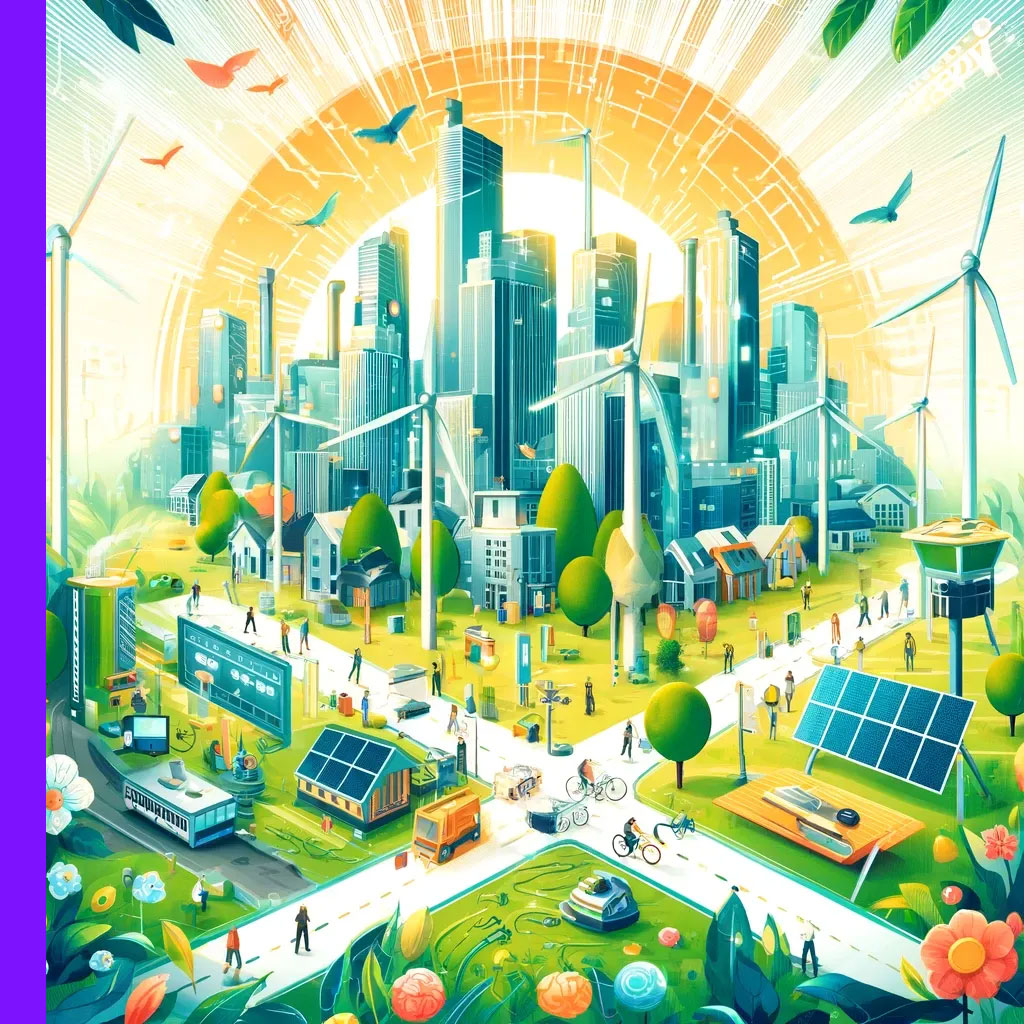
Is Innovation Good
Innovation has always been a driving force behind progress, pushing the boundaries of what is possible and continually improving our lives. Its value can be seen in various aspects:
- Economic Growth: Innovation drives economic expansion by creating new markets and industries. For instance, the advent of the internet has spawned entirely new sectors, such as digital marketing and e-commerce. A study by the Department of Economics at the University of California, Berkeley, found that technological innovations account for nearly half (!) of the U.S. economic growth.
- Improved Quality of Life: Innovations in healthcare, such as CRISPR gene editing, offer the potential to cure genetic diseases, significantly improving patient outcomes. For example, the use of CRISPR to treat sickle cell disease has shown promising results in early clinical trials.
- Environmental Benefits: Innovation can lead to more sustainable practices. The development of renewable energy technologies, like solar panels, has helped decrease reliance on fossil fuels, thus reducing carbon emissions. A report by the International Renewable Energy Agency (IRENA) indicates that renewable energy jobs reached 11.5 million globally in 2019, showing a positive impact on both the environment and employment.
Case Study: Impossible Foods
- Company: Impossible Foods (Founded in 2011)
- What Was Done: Impossible Foods developed plant-based substitutes for meat products, focusing on taste, texture, and cooking properties similar to real meat.
- Results/Impact: They significantly reduced environmental impacts associated with animal farming, offering a sustainable alternative that conserves natural resources and reduces greenhouse gas emissions. Their products are now widely available, showcasing how innovation can align consumer preferences with environmental sustainability.
- Social Improvement: Through the development of new communication tools, innovation has transformed the way we connect, making it easier to share knowledge and foster global communities. The proliferation of smartphones, for example, has revolutionized access to information and services for billions of people worldwide.
Case Study: GravityLight
- Company: GravityLight (Developed in 2012)
- What Was Done: GravityLight created an innovative off-grid light designed for areas without reliable electricity access. It generates light using the gravitational pull of a weight, requiring no fuel or batteries.
- Results/Impact: It provides a safer, renewable alternative to kerosene lamps, reducing fire risks and pollution, and offering significant social benefits in developing countries.
However, it is essential to note that innovation is not inherently good or bad; its impact depends on how it is used and integrated into society. For instance, while the internet has created countless opportunities for learning and connection, it has also introduced challenges like data privacy concerns and digital divides.
In conclusion, innovation is a critical component of progress, driving economic growth, improving the quality of life, offering environmental solutions, and fostering social advancements. Yet, it requires careful management to ensure that its effects are beneficial and inclusive.
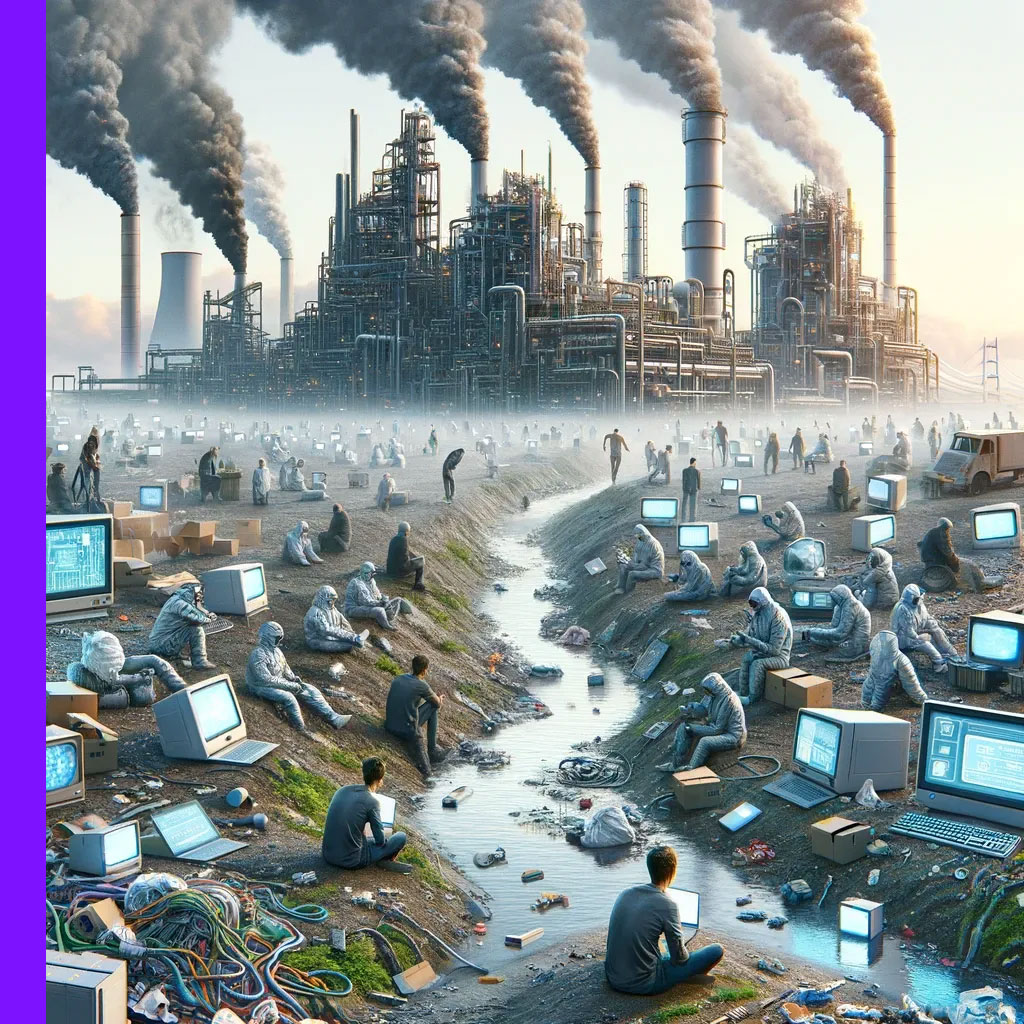
Can Innovation Be Bad
When innovation goes wrong, it serves as a reminder that the outcomes of new technologies or processes are not always beneficial or aligned with the intentions behind their creation.
Here are several ways in which innovation can lead to unintended negative consequences:
- Job Displacement and Economic Disruption: Innovations that automate human tasks can lead to significant shifts in employment. The introduction of ATMs in the banking sector, for example, changed the role of bank tellers and reduced their numbers in branches. While some industries grow, others may suffer or become obsolete, creating economic disruption and necessitating workforce retraining.
- Security Breaches and Ethical Missteps: With the advancement of digital technologies, particularly in the realm of cybersecurity, the potential for harm escalates when these innovations are misused. The 2017 Equifax data breach exposed the personal information of 147 million people, demonstrating how technological vulnerabilities can have widespread repercussions.
- Perpetuating Inequality: Innovations in areas such as education and health can often widen the gap between different socio-economic groups. Online learning platforms have the potential to democratize education but can also leave behind those without reliable internet access. Similarly, life-extending medical treatments may only be accessible to the wealthy, deepening health inequalities.
- Dependency and Loss of Skills: Over-dependence on technology can lead to a degradation of fundamental skills and resilience. For example, the reliance on calculators and computers for basic arithmetic has been shown to impact students' mathematical proficiency.
- Redundant and Futile Inventions: Innovation sometimes leads to products that, despite technological sophistication, find little to no practical application or demand in the real world. An illustrative case is that of the Segway, launched with considerable hype in 2001 as a personal transportation revolution. Despite its innovative design and mobility concept, the Segway did not become the mainstream transportation method its creators envisioned, largely due to its high cost, regulatory hurdles, and limited practicality in urban environments.
Case Study: Juicero
- Company: Juicero (Company folded in 2017)
- What Was Done: Juicero developed a high-end, internet-connected juicing machine. The device, which cost hundreds of dollars, pressed proprietary, pre-packaged fruit and vegetable packets to produce juice. The company aimed to revolutionize home juicing with technology and convenience.
- Results/Impact: Juicero became a widely cited example of Silicon Valley excess when it was discovered that the juice packets could be squeezed by hand, rendering the expensive machine unnecessary. The revelation led to widespread mockery and criticism, questioning the value and innovation behind the product. Sales plummeted, and the company shuttered operations in 2017, becoming a cautionary tale about the need for meaningful innovation that genuinely adds value to consumers.
- Environmental Degradation: Technological advancements, particularly in manufacturing and energy, can have detrimental environmental effects. The case of Volkswagen’s "Dieselgate" scandal, where software was used to cheat emissions tests, illustrates how innovation can be exploited for gain at the environment's expense.
- Ethical and Moral Concerns: Biotechnological innovation can also challenge ethical boundaries. The cloning of Dolly the sheep in 1996 sparked a fierce debate on the moral considerations of cloning and genetic manipulation, raising concerns about the potential consequences of these technologies.
- Fatal Outcomes: Innovations, particularly those that are not thoroughly tested or that bypass safety regulations, can result in catastrophic failures with grave consequences. The Chernobyl disaster in 1986, one of the most catastrophic nuclear accidents in history, was partly due to flawed reactor design coupled with serious mistakes made by the plant operators under the pressure of an experiment.
Case Study: Boeing 737 MAX
- Company: Boeing, Arlington County, Virginia, USA (Founded on 1916)
- What Was Done: Boeing developed the 737 MAX, a new version of its best-selling 737 aircraft, with updated engines and aerodynamics. To compensate for the engines' larger size and changed aerodynamics, Boeing introduced the Maneuvering Characteristics Augmentation System (MCAS), software designed to automatically adjust the plane's pitch down under certain conditions.
- Results/Impact: The MCAS system, based on data from a single angle of attack (AOA) sensor, led to two catastrophic crashes: Lion Air Flight 610 in October 2018 and Ethiopian Airlines Flight 302 in March 2019, killing a total of 346 people. Investigations revealed that pilots were not adequately informed about MCAS, and its reliance on a single sensor made it vulnerable to malfunction. The global fleet was grounded for nearly two years, leading to billions in losses for Boeing, significant reputational damage, and a reevaluation of regulatory oversight processes.
These instances underscore the importance of considering the ethical, social, and environmental implications of innovation. It's not only about creating something new but also about anticipating and mitigating potential risks and consequences.
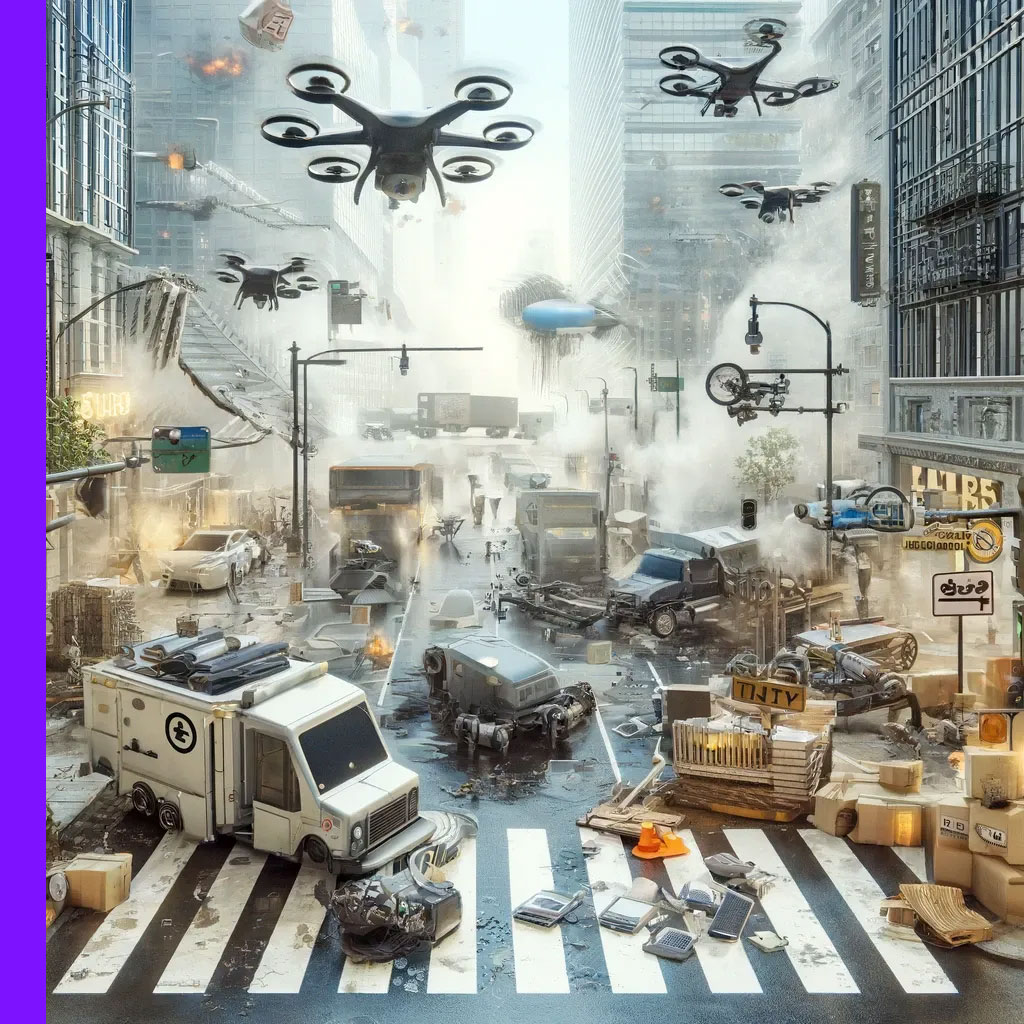
When Innovation Goes Wrong
Innovation is a double-edged sword that requires careful handling. Despite the best intentions, sometimes innovations can lead to unintended consequences that are detrimental to individuals, societies, or the environment.
Here are some instances where innovation has not gone as planned:
- Disasters and Casualties: Innovations intended to advance technology or improve efficiency can sometimes lead to catastrophic events and loss of lives. The collapse of the Tacoma Narrows Bridge in 1940, due to a failure to account for aerodynamic stability in its design, stands as a classic example of engineering innovation that ended in disaster.
- Health Risks: The pharmaceutical industry has witnessed cases where drugs, initially hailed as breakthroughs, have caused serious health issues. For example, Thalidomide, developed in the 1950s, was intended to treat morning sickness but led to birth defects, affecting thousands of babies before it was withdrawn.
Case Study: Vioxx (Rofecoxib)
- Company: Vioxx by Merck (Withdrawn in 2004)
- What Was Done: Vioxx was introduced by Merck & Co. as a revolutionary anti-inflammatory drug to treat arthritis pain while supposedly having fewer gastrointestinal side effects than existing NSAIDs.
- Results/Impact: Vioxx was linked to increased risk of heart attack and stroke, leading to its withdrawal from the market. It's estimated that up to 55,000 deaths could be attributed to the drug. The Vioxx case became a landmark in discussions about drug safety, regulatory oversight, and the importance of comprehensive clinical trials.
- Technology Failures: The tech world is not immune to setbacks where products fail or cause harm. Samsung’s Galaxy Note 7 is one such case, where battery defects caused the phones to catch fire, leading to a costly recall and discontinuation of the product.
- Economic Downturns: Financial innovations have sometimes resulted in economic turmoil. The 2008 global financial crisis can be partly attributed to the misuse of innovative financial instruments like mortgage-backed securities and complex debt derivatives.
- Social Disruption: Social media platforms, while innovative in connecting people, have also been implicated in serious societal issues, such as the spread of misinformation and the erosion of privacy. The misuse of Facebook to influence electoral processes is a testament to such disruption.
- Environmental Hazards: Innovations in industry and manufacturing have sometimes led to environmental disasters. The use of CFCs (chlorofluorocarbons) in refrigeration and aerosol sprays was a significant contributor to ozone layer depletion until their use was heavily regulated.
Case Study: Deepwater Horizon Oil Spill
- Company: Deepwater Horizon Oil Spill (Occurred in 2010)
- What Was Done: : The Deepwater Horizon, an offshore drilling rig, was exploring the Macondo Prospect in the Gulf of Mexico for BP when it exploded and sank, resulting in the largest marine oil spill in history.
- Results/Impact: : Eleven workers were killed, and the subsequent oil spill devastated marine and wildlife habitats, severely affected local fishing and tourism industries, and led to extensive environmental damage. The disaster underscored the risks associated with deepwater drilling innovations and the need for stringent safety and environmental protections.
- Company: Deepwater Horizon Oil Spill (Occurred in 2010)
These examples underscore the importance of rigorous testing, ethical considerations, and regulatory oversight in the innovation process. They also highlight the need for mechanisms to address the consequences when innovation does go wrong.

Why Innovation Depends on Intellectual Honesty
Intellectual honesty is a cornerstone of meaningful innovation. It demands acknowledgment of what we don't know, the integrity to recognize our mistakes, and the courage to build on others' ideas. This foundational principle is essential not only for the advancement of technology and science but also for fostering an environment where innovation can thrive transparently and ethically. By embracing our limitations and uncertainties, we open the door to genuine discovery and the opportunity to address complex challenges with integrity and creativity.
Below are key reasons why intellectual honesty is crucial to the innovation process:
Acknowledgment of Current Limitations
- Understanding the Baseline: Recognizing the true state of current technology or knowledge allows for a clear direction for improvement.
- Identifying Gaps: Honest assessment of gaps in the market or technology leads to more targeted and effective innovation efforts.
Ethics in Innovation
- Avoiding Harm: Ethical considerations prevent the pursuit of innovation at all costs, particularly when it may cause harm to individuals or society.
- Transparency: Being upfront about the potential risks and limitations of new technology fosters trust and long-term adoption.
Building on Previous Work
- Respecting Intellectual Property: Honoring the work of others and building upon it ethically drives the innovation ecosystem.
- Collaborative Progress: Acknowledging contributions from various fields can lead to cross-disciplinary innovations that may not arise in isolation.
Cultivating Trust
- Consumer Confidence: Honest communication about the capabilities and development stage of products builds consumer trust.
- Investor Relations: Transparency with stakeholders about challenges and setbacks can build stronger, more resilient relationships.
Case Study: Volkswagen Emissions Scandal (Dieselgate)
- Company: Volkswagen, Wolfsburg, Germany (Dieselgate scandal broke in September 2015)
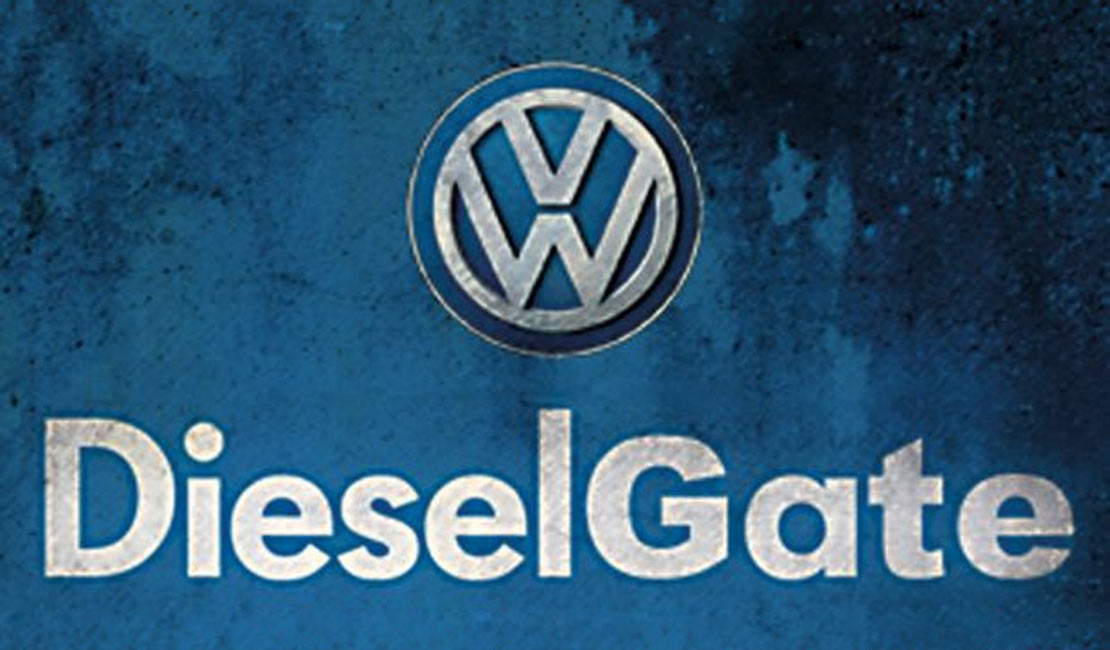
- What Was Done: Volkswagen admitted to installing software in its diesel vehicles that could detect when they were being tested for emissions and alter the performance accordingly to meet regulatory standards. On the road, these vehicles would emit pollutants at levels up to 40 times higher than what was legally allowed.
- Results/Impact: This act of intellectual dishonesty led to billions in fines for Volkswagen, a significant hit to its reputation, and the recall of millions of vehicles worldwide. It highlighted the need for integrity in environmental innovation and compliance, sparking a global debate on emissions testing and regulation enforcement. This scandal also accelerated the automotive industry's shift towards electric vehicles as a cleaner alternative.
- Company: Volkswagen, Wolfsburg, Germany (Dieselgate scandal broke in September 2015)
Scientific Rigor
- Reproducibility: Adherence to rigorous standards ensures that innovation is reliable and reproducible, a hallmark of scientific advancement.
- Peer Review: Engaging honestly with the peer review process leads to stronger, more defensible innovations.
Case Study: Theranos
- Company: Theranos, Palo Alto, California, USA (Founded in 2003, collapsed in 2018)

- What Was Done: Theranos, led by Elizabeth Holmes, claimed to have revolutionized blood testing by developing technology that could conduct comprehensive tests with just a few drops of blood. The company promised to make blood testing faster, more convenient, and less invasive, attracting significant investment and attention.
- Results/Impact: The claims about Theranos's technology were significantly overstated. The company failed to provide accurate, reliable results with the tiny amount of blood it claimed to require, putting patients at risk and deceiving investors, regulators, and the public. The fallout from these revelations led to the company's dissolution, legal battles, and a general discussion about the importance of transparency and honesty in the health tech sector.
- Company: Theranos, Palo Alto, California, USA (Founded in 2003, collapsed in 2018)
How to Ensure Intellectual Honesty in Innovation Projects
- Foster a Culture of Transparency: Encourage open discussions about the limitations and potential risks of new technologies. This includes transparently sharing both successes and failures to learn from each experience.
- Implement Rigorous Peer Review Processes: Before introducing an innovation to the market, subject it to thorough scrutiny by independent experts. This can help identify flaws or ethical concerns early on.
- Encourage Whistleblowing Mechanisms: Create safe channels for employees to report unethical practices or concerns without fear of retaliation, ensuring that potential issues can be addressed promptly.
- Promote Diverse Teams: Diverse perspectives can challenge groupthink and introduce a wider range of ethical considerations, leading to more thoughtful and inclusive innovations.
- Educate on Ethical Standards: Regular training on ethical principles, data integrity, and the social implications of technology can help embed these values in the innovation process.
- Reward Integrity: Recognize and reward team members who demonstrate a commitment to ethical standards and intellectual honesty, encouraging others to follow suit.
- Implement Ethical Audits: Regularly audit innovation processes and outcomes for ethical compliance, ensuring that projects align with broader societal values and regulations.
- Engage with Stakeholders: Include customers, community members, and other stakeholders in the innovation process to gather diverse insights and feedback, ensuring that products and services meet real needs without causing harm.
- Adopt Iterative Development: Embrace an iterative approach to development that allows for continuous testing, feedback, and adjustment. This can help identify and address ethical and practical issues more effectively.
- Establish Clear Policies: Develop clear policies and guidelines for ethical decision-making and intellectual honesty within projects, providing a framework for addressing dilemmas and conflicts of interest.
- Collaborate with Regulatory Bodies: Work closely with regulatory agencies and industry groups to ensure innovations comply with existing laws and ethical standards, and to help shape future regulations that support responsible innovation.
In conclusion, Intellectual honesty acts as the guiding principle for sustainable and responsible innovation. It ensures that the path of innovation is not just groundbreaking but also ethically sound and socially responsible. This approach not only mitigates the risks associated with new technologies and ideas but also builds public trust and supports the long-term success of innovative endeavors.
In a world increasingly reliant on technological solutions, maintaining a commitment to intellectual honesty is more important than ever, guiding us toward innovations that truly benefit humanity while respecting our planet and its inhabitants.
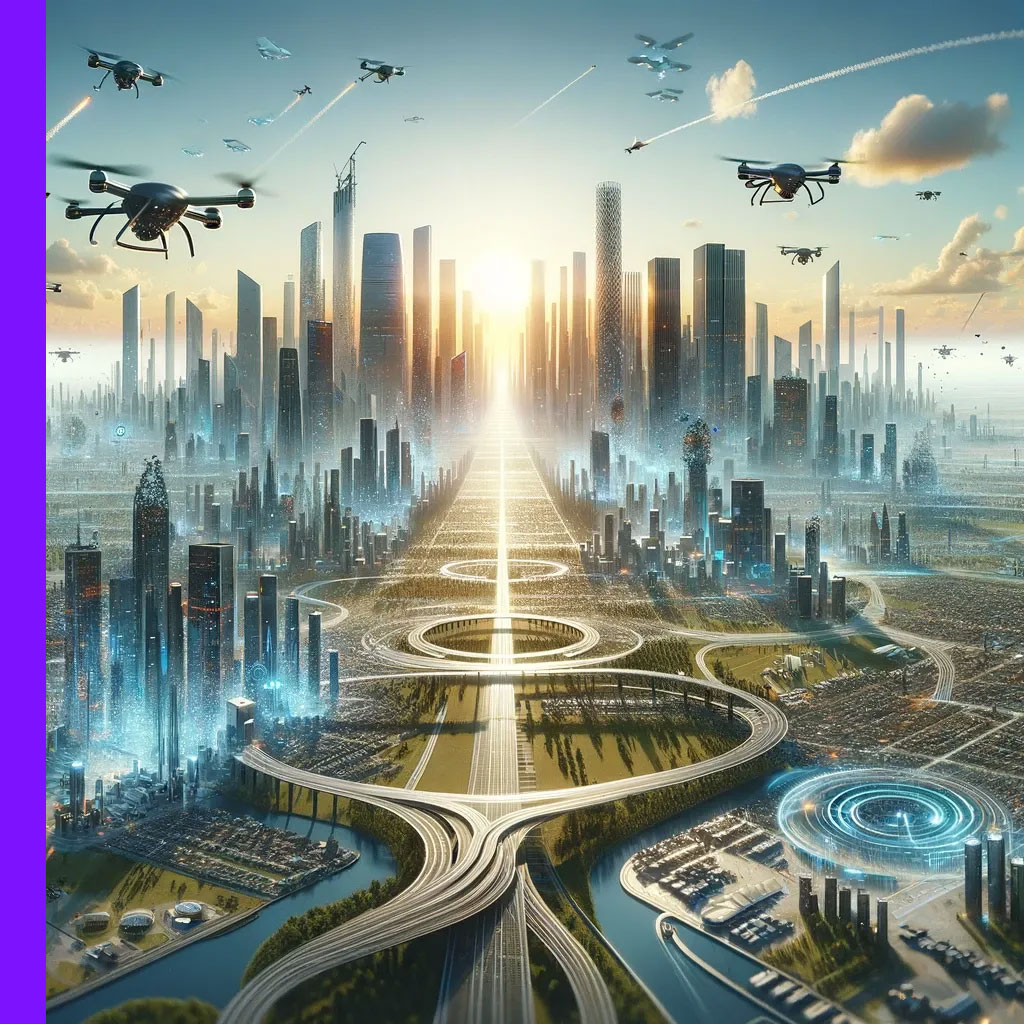
Will Innovation Ever Stop
The notion of innovation coming to a halt is almost antithetical to the very essence of human curiosity and drive. History and current trends suggest that innovation is a continuous process, driven by several inexhaustible factors:
Ever-present Challenges
- Global Issues: Challenges such as climate change, pandemics, and inequality call for innovative solutions, ensuring a continuous drive for progress.
- Local and Personal Needs: On a smaller scale, everyday problems and personal needs provide endless opportunities for innovation.
Technological Advancements
- Exponential Growth of Technology: Technologies, especially in fields like artificial intelligence and biotechnology, are evolving at an unprecedented pace, opening new avenues for innovation.
- Cross-disciplinary Fusion: The intersection of different scientific disciplines often sparks breakthrough innovations, suggesting that as long as fields of study exist, they will continue to inspire new ideas.
Case Study: CRISPR-Cas9 Gene Editing
- Field: Biotechnology, specifically genetic engineering
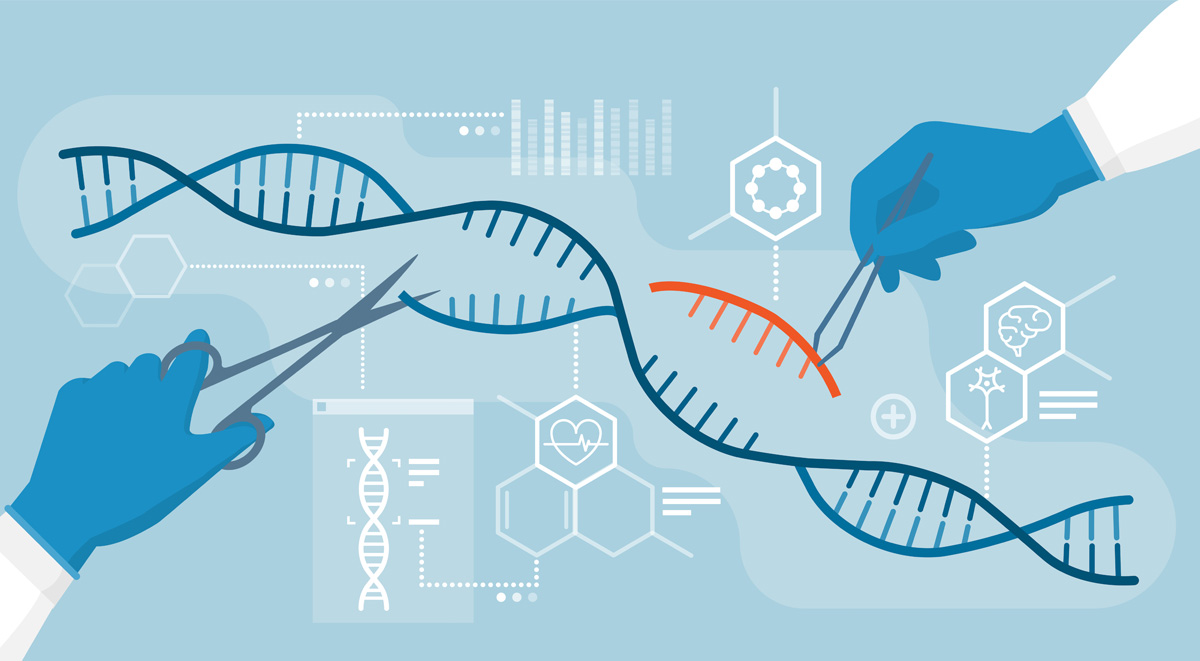
- Perception Before Breakthrough: Before the advent of CRISPR-Cas9, genetic engineering was considered a complex, time-consuming, and expensive process. The field of biotechnology was seen as mature, with incremental advances rather than groundbreaking innovations. Techniques like zinc finger nucleases (ZFNs) and TALENs (Transcription Activator-Like Effector Nucleases) were used for gene editing, but they were not easy to design, expensive, and had limitations in precision and versatility.
- Breakthrough: The discovery and development of CRISPR-Cas9 technology.
- Date: Key developments occurred in the early 2010s, with pivotal research published around 2012-2013.
- What Was Done: Researchers Jennifer Doudna and Emmanuelle Charpentier, along with their teams, developed CRISPR-Cas9, a technology that allows scientists to edit genes within organisms with unprecedented precision, efficiency, and flexibility. The system, which mimics a natural defense mechanism in bacteria, can be programmed to target specific genetic sequences and edit DNA at precise locations.
- Results/Impact: : CRISPR-Cas9 has revolutionized the field of genetic engineering, making it possible to edit the genome of almost any organism quickly and cheaply. It has wide-ranging applications, from the development of new medical treatments and therapies for genetic diseases to improvements in crop resilience and yield. The technology has opened up new avenues of research that were previously considered unfeasible, fundamentally changing the trajectory of biotechnology and related fields. In recognition of their work, Doudna and Charpentier were awarded the Nobel Prize in Chemistry in 2020.
- Field: Biotechnology, specifically genetic engineering
Human Curiosity and Ambition
- Inherent Curiosity: The human quest for knowledge and understanding is limitless, fueling continuous exploration and discovery.
- Desire for Improvement: The drive to enhance our lives and environments is a powerful motivator for ongoing innovation.
Case Study: Quantum Computing Breakthrough by Google
- Field: Computing and Information Technology
- Perception Before Breakthrough: Before significant advancements in quantum computing, the field of computing was largely dominated by classical computers, which process information in binary form. Quantum computing, a concept for decades, was largely theoretical with practical applications appearing distant. The immense technical challenges and the need for breakthroughs in both theory and materials science made progress seem slow and uncertain.
- Breakthrough: Google's Quantum Supremacy Achievement.
- Date: October 2019.
- What Was Done: Google announced that its quantum computer, Sycamore, had achieved "quantum supremacy" by performing a specific task in 200 seconds that would take the world's most powerful supercomputer 10,000 years to complete. This task, while not commercially useful, was designed to prove that quantum processors can surpass classical supercomputers in certain types of calculations.
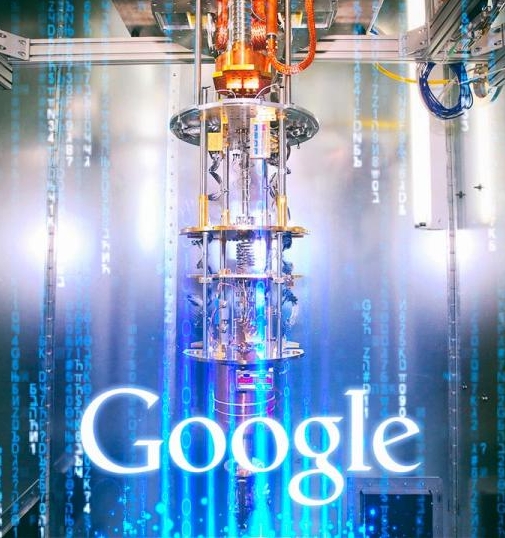
- Results/Impact: Google's achievement marked a significant milestone in the field of quantum computing, showcasing the potential of quantum processors to solve problems that are intractable for classical computers. This breakthrough has accelerated interest and investment in quantum computing, leading to rapid advancements in hardware and algorithms. It has opened new possibilities for tackling complex challenges in fields such as cryptography, material science, and drug discovery, where the unique properties of quantum computing can be leveraged for immense computational power and efficiency.
Economic and Competitive Forces
- Market Dynamics: Competitive markets compel businesses to innovate continuously to gain an edge, meet consumer demands, and address emerging trends.
- Economic Incentives: Financial rewards, from profit to funding opportunities, provide strong incentives for individuals and organizations to pursue innovative endeavors.
Social and Cultural Evolution
- Cultural Shifts: As societies evolve, so do their values and needs, which in turn drive innovation to reflect these changes.
- Global Collaboration: The increasing interconnectedness of the world promotes the exchange of ideas and collaborative efforts, further fueling the innovation engine.
 Case Study: The Breakthrough of Graphene
Case Study: The Breakthrough of Graphene- Field: Material Science
- Perception Before Breakthrough: Prior to the isolation of graphene, material science was advancing through the development and enhancement of existing materials. The discovery of a new material that could significantly surpass the capabilities of current technologies was highly anticipated yet seemed distant. The focus was primarily on improving the properties of materials like silicon, used in semiconductor devices, without a clear candidate for a revolutionary material breakthrough.
- Breakthrough: Isolation and Characterization of Graphene.
- Date: Graphene was successfully isolated in 2004 by Andre Geim and Konstantin Novoselov at The University of Manchester.
- What Was Done: Graphene, a single layer of carbon atoms arranged in a two-dimensional honeycomb lattice, was isolated using a surprisingly simple method involving Scotch tape to peel layers from graphite. This groundbreaking work demonstrated graphene's extraordinary electrical, thermal, and mechanical properties, including its strength, flexibility, and conductivity.
- Results/Impact: The discovery of graphene has opened up new horizons in material science and technology, leading to a surge in research aimed at exploring its potential applications. These range from flexible electronics, faster semiconductors, and energy storage devices to advanced composites, water filtration systems, and even medical applications. The breakthrough has not only earned Geim and Novoselov the Nobel Prize in Physics in 2010 but also sparked a global race to commercialize graphene-based technologies. It challenged the perceived maturity of material science, showing that fundamental discoveries with vast application potential are still possible.
In conclusion, the ceaseless nature of challenges, coupled with human ingenuity and the relentless pursuit of progress, suggests that innovation is an evergreen aspect of human society. It evolves as we do, shaped by and shaping our understanding of the world and ourselves.

Innovation for Equity
Innovation for equity focuses on leveraging technological and social advancements to bridge gaps in access, opportunity, and outcomes for underrepresented or disadvantaged groups. Here's how innovation can contribute to creating a more equitable society:
Education Access
- Digital Learning Platforms: Online education resources can democratize access to quality education, especially for students in remote or underserved communities.
- Adaptive Learning Technologies: Tailored educational experiences can help address diverse learning needs, ensuring all students have the opportunity to succeed.
Case Study: BRCK
- Company: BRCK, Beaverton, Oregon, USA (Founded in 2013)

- What Was Done: BRCK developed a rugged internet modem designed for harsh environments with unreliable electricity and internet service, aiming to connect people in the most remote areas.
- Results/Impact: BRCK's technology has provided internet access to schools and individuals in remote parts of Africa, demonstrating innovation's role in bridging the digital divide.
- Company: BRCK, Beaverton, Oregon, USA (Founded in 2013)
Healthcare Equity
- Telehealth Services: Remote healthcare services can significantly improve access for people in rural or underserved areas, breaking down barriers to care.
- Affordable Diagnostic Tools: Innovations in low-cost medical devices enable broader access to life-saving diagnostics in low-income regions.
Economic Inclusion
- Financial Technologies (FinTech): Mobile banking and digital payment systems can provide financial services to the unbanked, fostering economic participation and empowerment.
- Microenterprise Support: Platforms connecting small producers with global markets can help small businesses in developing countries access new opportunities.
Social Justice
- Data for Good: Big data and AI can be used to identify and address systemic inequalities, from biased hiring practices to unequal urban development.
- Accessible Technologies: Innovations in assistive devices and accessible software design can enhance independence and participation for people with disabilities.
Case Study: Microsoft's AI for Accessibility program
- Company: Microsoft, Redmond, Washington, USA (founded 1975)

- What Was Done: Microsoft's AI for Accessibility program invests in projects that create more accessible technology for people with disabilities.
- Results/Impact: The program has led to innovations that improve daily life and work opportunities for people with disabilities, showcasing how technology can be leveraged to create more equitable opportunities.
- Company: Microsoft, Redmond, Washington, USA (founded 1975)
Environmental Justice
- Clean Energy Solutions: Access to affordable clean energy technologies can reduce energy poverty and mitigate the environmental impact on vulnerable communities.
- Sustainable Agriculture: Innovations in sustainable farming techniques can support food security and resilience in climate-affected regions.
Innovation for equity requires a deliberate focus on inclusivity and the intentional design of technologies and policies that address the needs of all segments of society, particularly those historically marginalized. By prioritizing equity in the innovation process, we can harness the power of technology to create more inclusive, just, and equitable communities.

Innovation with Integrity
Innovation with integrity refers to the pursuit of new ideas, products, and processes in a manner that is ethically responsible, transparent, and considers the broader impact on society and the environment. This approach ensures that advancements are not only technologically sound but also socially and morally grounded. Here are some key aspects:
Ethical Foundations
- Responsible Research and Development: Ensuring that R&D activities respect ethical standards and societal values, particularly in sensitive fields like biotechnology and AI.
- Transparency: Openly communicating the intentions, methodologies, and potential impacts of innovations to stakeholders and the public.
Social Responsibility
- Addressing Societal Needs: Directing innovation efforts towards solving pressing social issues, such as health disparities, educational access, and environmental sustainability.
- Inclusive Innovation: Engaging diverse groups in the innovation process to ensure that outcomes are beneficial and accessible to all segments of society, including marginalized and vulnerable populations.
Environmental Stewardship
- Sustainable Practices: Integrating sustainability into the innovation process, from resource-efficient production methods to developing products with a minimal environmental footprint.
- Circular Economy: Promoting innovations that enable the reuse, recycling, and recovery of products and materials, reducing waste and environmental impact.
 Case Study: Interface
Case Study: Interface- Company: Interface, Atlanta, Geoergia, USA (Climate Take Back strategy launched in 2016)
- What Was Done: Interface, a modular carpet manufacturer, committed to becoming a carbon negative company through innovative manufacturing processes, recycling programs, and sustainable material sourcing.
- Results/Impact: Interface has drastically reduced its environmental impact, leading the industry towards sustainable practices and proving that businesses can thrive while prioritizing the planet.
Governance and Accountability
- Regulatory Compliance: Adhering to legal and regulatory frameworks that govern innovation activities, ensuring safety, privacy, and security.
- Ethical Oversight: Implementing governance structures, such as ethics committees and review boards, to oversee innovation projects and ensure alignment with ethical principles.
Stakeholder Engagement
- Collaborative Partnerships: Building partnerships with academia, industry, government, and civil society to foster multidisciplinary approaches to innovation.
- Community Involvement: Engaging with communities and end-users early in the innovation process to understand their needs, concerns, and aspirations.
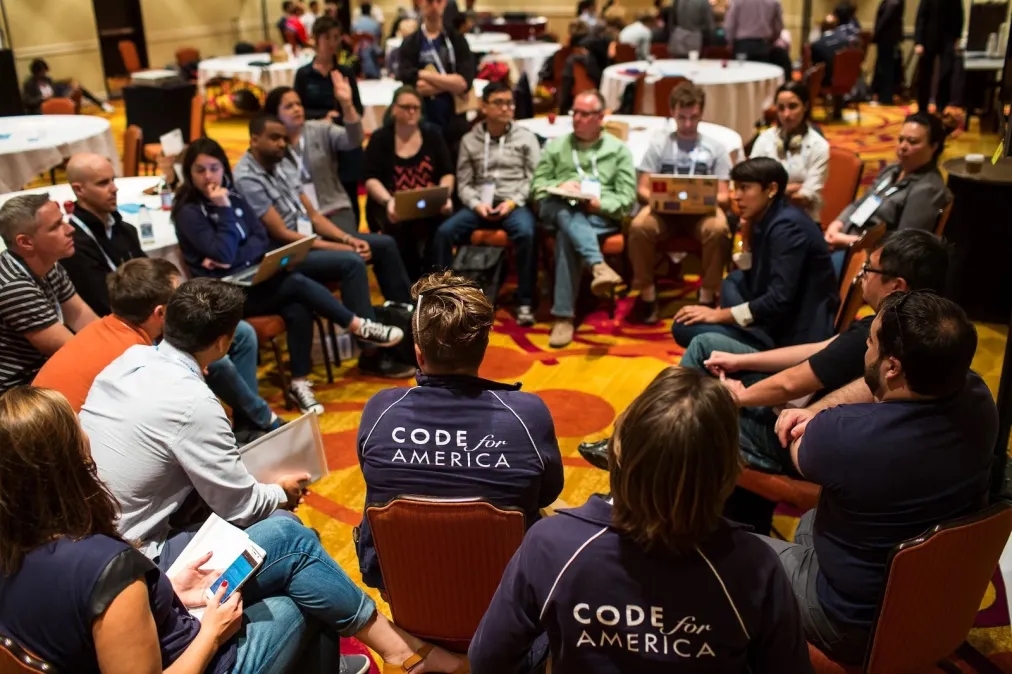 Case Study: Code for America
Case Study: Code for America- Company: Code for America (Founded in 2009)
- What Was Done: Code for America uses technology to improve government services and make them more accessible and efficient for all, particularly for low-income and underserved populations.
- Results/Impact: Their projects have streamlined access to social services, improved the criminal justice system, and made government more transparent, showcasing how innovation with integrity can transform public services.
How to Ensure that Innovation is Practiced with Integrity
- Define Clear Ethical Guidelines: Establish a set of ethical principles that guide the innovation process. This includes considerations around privacy, security, fairness, and the environmental impact of innovations.
- Engage in Stakeholder Dialogue: Regularly engage with stakeholders, including customers, employees, community members, and industry experts, to gain diverse perspectives on the potential impacts of your innovation. This dialogue can help identify unforeseen ethical dilemmas and societal concerns.
- Conduct Impact Assessments: Before launching a new product or service, conduct thorough impact assessments to understand its potential effects on society and the environment. This should include both positive impacts and potential risks or negative outcomes.
- Emphasize Transparency: Be open about the capabilities, limitations, and ethical considerations of your innovations. Transparency builds trust and allows for informed decision-making by users and stakeholders.
- Foster an Ethical Culture: Cultivate a corporate culture that prioritizes ethical considerations and social responsibility. This includes training employees in ethical decision-making and encouraging them to speak up about potential ethical issues.
- Implement Responsible Research and Development (R&D): Ensure that R&D processes incorporate ethical considerations from the outset, including the responsible use of data, respect for privacy, and minimizing harm.
- Collaborate on Standards and Regulations: Work with industry peers, regulators, and non-governmental organizations (NGOs) to develop standards and regulations that promote innovation while protecting societal interests and ethical values.
- Commit to Continuous Learning: Recognize that the ethical landscape is constantly evolving, especially with rapid technological changes. Commit to ongoing learning and adaptation of your ethical guidelines and practices.
- Develop Accountability Mechanisms: Create mechanisms for accountability, including ethics boards, oversight committees, or external audits, to regularly review and assess the ethical implications of your innovation activities.
- Invest in Community and Social Initiatives: Demonstrate a commitment to positive social impact by investing in community initiatives, education, and social enterprises that align with your innovation areas.
Innovation with integrity is about balancing the drive for progress with a commitment to ethical principles and societal well-being. It recognizes that true innovation is not just about what can be done, but also about what should be done for the greater good.
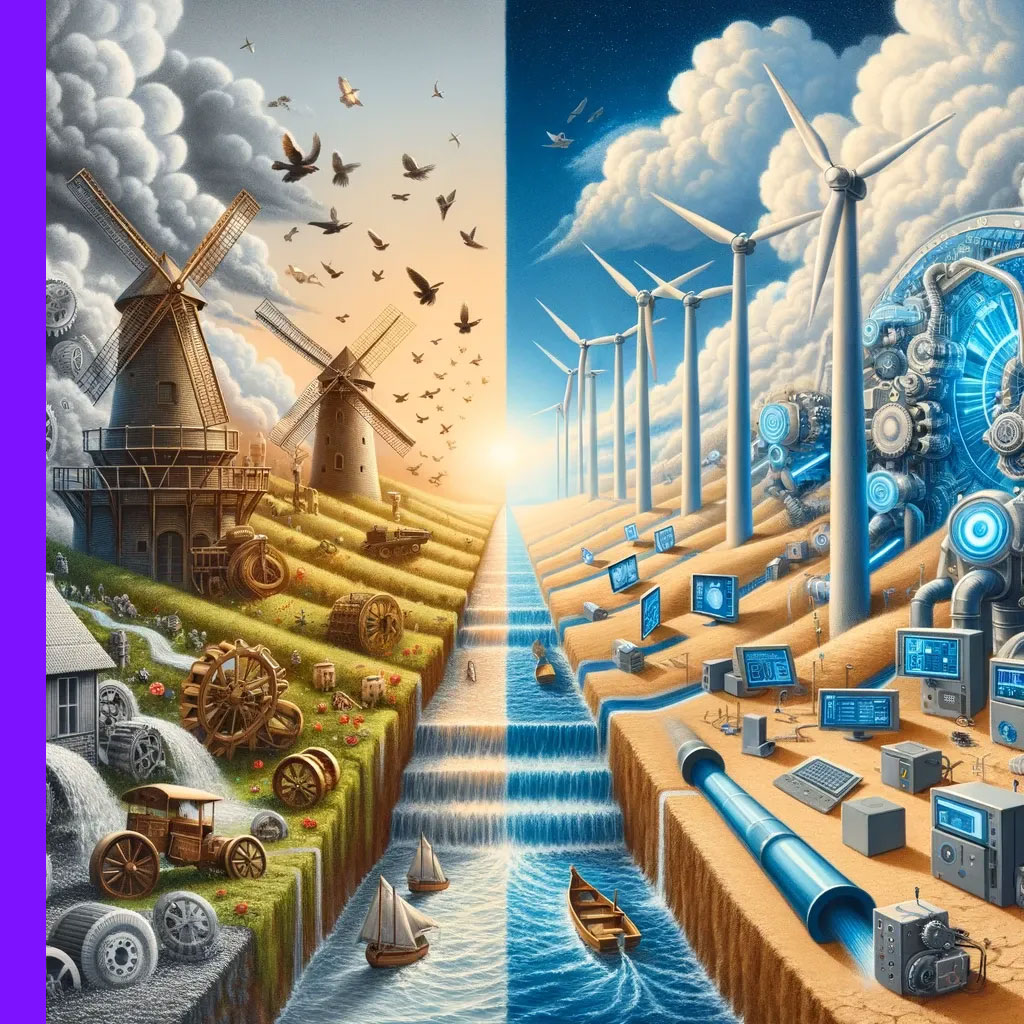
Innovation VS Ingenuity
Innovation and ingenuity are closely related concepts that often intersect in the process of creating new solutions and approaches. However, they have distinct nuances that differentiate them:
Innovation
- Definition: Innovation refers to the process of implementing new ideas, products, processes, or services that meet new requirements, unarticulated needs, or existing market needs in a new or significantly improved manner.
- Characteristics:
- Systematic and Structured: Often involves formal processes of research, development, and commercialization.
- Scalability: Solutions are designed to be scalable and widely applicable, potentially transforming industries or societal practices.
- Measurable Impact: The success of innovation is often measured by market adoption, economic impact, and how it addresses specific challenges or needs.
Ingenuity
- Definition: Ingenuity is the quality of being clever, original, and inventive, often in the context of solving problems with limited resources or under constraints.
- Characteristics:
- Resourcefulness: Emphasizes creative problem-solving that makes do with available resources, often in a novel or unconventional way.
- Adaptability: Reflects the ability to adjust to new situations and challenges quickly, creating solutions that may be bespoke or situation-specific.
- Intuitive Insight: Solutions are frequently the result of intuitive understanding or a sudden insight, rather than a formalized process.
Interplay Between Innovation and Ingenuity
- Mutual Enhancement: Ingenuity can spark innovation by providing creative solutions that can be formalized, scaled, and transformed into innovative products or services.
- Ingenuity as a Catalyst: In resource-constrained environments, ingenuity often leads the way, laying the groundwork for structured innovation processes to further develop and refine ideas.
- Innovation Nurturing Ingenuity: Conversely, innovation ecosystems can provide the tools, technologies, and frameworks that enable individuals to apply their ingenuity in new and exciting ways.
Is Innovation Possible Without Ingenuity?
In theory, it is possible to have innovation without the spark of ingenuity in a narrow sense. This can occur in situations where innovation is driven more by incremental improvements, optimization, or the application of existing ideas in new contexts, rather than groundbreaking creativity. Examples include:
- Process Improvements: Enhancing the efficiency of manufacturing processes through incremental updates or adopting best practices from other industries may not require original thinking but still qualify as innovation.
- Adopting Technologies: Implementing new technologies or systems that have been developed elsewhere to improve business operations or customer experiences can be innovative for an organization but may not require ingenuity on their part.
- Scaling Solutions: Expanding the reach of a proven solution to new markets or demographics involves innovative strategies for growth but might not demand originality in the solution itself.
While innovation can occur in the absence of what might traditionally be considered ingenuity, the most impactful and transformative innovations often arise from a foundation of creative and ingenious thought. Ingenuity propels the boundaries of what is considered possible, leading to breakthrough innovations that can redefine industries, create new markets, or solve complex issues.
Therefore, while it's theoretically possible to have innovation without the high degree of originality and creativity denoted by ingenuity, such innovations are likely to be less transformative. The synergy of innovation and ingenuity is what typically leads to the groundbreaking changes that significantly impact industries and societies. In practice, fostering an environment that encourages both the systematic pursuit of innovation and the creative, original thinking of ingenuity is essential for generating truly transformative solutions.
Systematic innovation
Interested in getting help with systematic innovation processes and developing new products and services?
Contact us: info@zooz.co.il ,+972-9-958-5085
Innovation Articles
- Innovation overview
- Innovation management
- Innovation methods
- Innovation tools
- Innovation and creativity
- Innovation and other disciplines
- Innovation in organizations
- Innovation career
- Innovation importance
- Innovation goals
- Innovation values
- Inspiration for innovation
- Innovation education
- Product innovation
- Service innovation
- Technological innovation
- Innovation examples
- Innovations across various industries
- Innovation glossary (200 terms)






